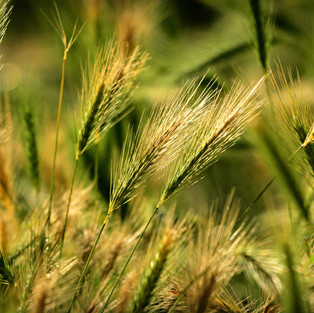Grass seed injury in dogs
- Dr Vicky Strong

- Aug 6, 2020
- 2 min read
They might only be small, but grass seeds (or awns) can cause big problems for pets during the warmer months. This article explains how a simple gallivant through the grass can result in an unexpected vet’s bill.
Grass seeds can get caught in dogs’ fur as they run through the long grass. Once they have hold, their sharp ends and tornedo shape allows them to burrow further – into the ear canal, eyes, nose or under the dog’s skin, often between the toes.
Above (left and middle): All grasses can be a problem, but the barbed shape of the foxtail makes it particularly dangerous. Above (right): A foxtail grass seed embedded into the skin between the toes of a dog. This is a very common site for grass seed injury.
How do I know if a dog has a grass seed injury?
Whatever their chosen site of havoc, grass seeds cause irritation, inflammation and pain. The dog may therefore seem lethargic and off-colour.
Other signs are usually specific to the location of the grass seed:

I think my dog has a grass seed injury - what should I do?
If you can see the grass seed and remove it easily, do so using a pair of tweezers. Bathe the site with salt water.
If you cannot see or easily remove the grass seed, seek veterinary attention. Don't wait to see what happens. Wherever the grass seed is, it is unlikely it will come out by itself and is at risk of burying deeper and causing more problems.
What will the vet do?
The vet will examine the dog to confirm the diagnosis. They might be able to see the grass seed itself (e.g. by looking down the dog’s ear) or its site of entry (e.g. between the toes).
In some cases, they might be able to remove the grass seed there and then, using specially designed tweezers. However, in many cases - a sedative or general anaesthetic is necessary.
The vet may also prescribe with some follow on treatment, such as ear drops or pain relief, to give the dog at home.
How can I prevent grass seed injury in my dog(s)?
The only way to prevent grass seed injury entirely is to avoid exercising dogs in long grass especially during the warmer months but this is neither practical or fun!

Inspect your dog from head to toe after exercising them in long grass. Run your hands or a soft brush through their hair, paying special attention to the face, ears and feet. Remove any grass seeds you find straight away.
Dogs with long or wiry coats are at increased risk. Keep their coat short and well-groomed especially during the warmer months and regularly trim the hair around the ears and between the toes.
ABOVE: After running through long grass, a dog’s coat can be peppered with grass seeds.










Comments